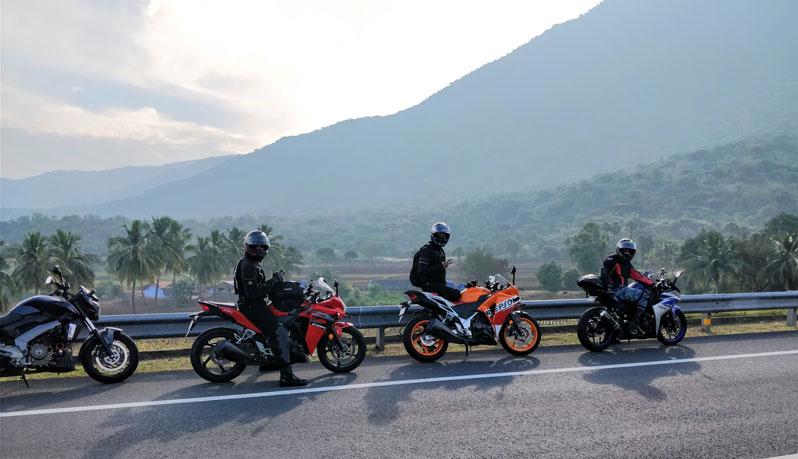
Going on a Poker Run or Bike Week This Summer?
A motorcycle GPS is absolutely necessary. Let us explain why.
by D. Starry
on June 19, 2018
Motorcycles are really great machines. They are awesome to ride and they actually can save you a lot of money on gas. Drivers who have motorcycles tend to love them for the sheer joy of riding – some older riders even say it makes them feel young again! These riders also need GPS devices to help them as they ride across the country to visit friends and family or to ride in different charity events. Here are some important features to look for when purchasing the best GPS for motorcycle use.
Weatherproof
If you are riding a motorcycle, you are going to experience all different types of weather situations. You may start your ride with it being sunny and 75 degrees and hit a rainstorm and it drench you with rain and knock the degree mark down my ten. For this reason, the GPS needs to be able to handle being wet and being in extreme heat or cold. The GPS needs to be able to be in the direct sunlight as well because there are no covers on a motorcycle, so the device will be exposed to the sun at all times.
Lifetime Maps of North America
Many motorcycle rides for different charities will go across state borders sometimes. Even when joy-riding, sometimes a map is just simply beneficial for a driver. Having a lifetime map access for motorcyclists would be a really great feature for a GPS to have. This way the driver would have up to date lists of maps that could actually direct him or her where to go with landmarks as opposed to just street signs, which could also be a safety hazard for a motorcyclist. They need to focus on driving and paying attention to the other cars around them that may not possibly be able to see them, not searching for road sign names.
Display size and mounting areas
The display screen is much more important for a motorcycle GPS, so the advice we give is different than the advice we give for trucker GPS's. The driver needs to be able to see the screen well, but it also needs to be small enough that it is not blocking any of the necessary buttons or other gages that the driver needs to be able to see as well. Many motorcyclists suggest getting a five inch screen, but the screens that are on the market can go up to seven inches. Many models offer the screen with a white backlighting, making it easier to see the display screen during a daylight ride. The mounting area and mechanism is also important. Some models on the market are actually magnetic so it can easily be placed on the tank of the bike or the handlebars for easy access and clear visibility. Another thing that drivers need to remember is to test out the GPS devices’ touch screen with their motorcycle gloves on. Sometimes the gloves will make it hard for the touch to register to the actual device. This would surely annoy the driver, having to take his or her gloves off every time they needed touch the screen.
Bluetooth Enabled
The GPS needs to have a port for a Bluetooth compatible headset or earplugs so that the driver can hear all of the commands and directions being given to him or her. Without access to the headphones it essentially makes the GPS worthless to the driver. Motorcyclists will not be able to hear the GPS without headphones if they are driving over 15 miles per hour or if they are in a lot of traffic and surrounded by multiple cars. Also since you’re riding a motorcycle, there is obviously no radio to listen to. It would be a great feature if the GPS included apps like Pandora or Spotify or even allowed the driver to sync his or her favorite songs from their phones onto the GPS for live streaming while they are riding. From personal experience, my father had a motorcycle when I was growing up and that was one of the setbacks that I disliked. I loved the experience of riding, but I hated just hearing the engine the whole time. I wish we had had Bluetooth back in the early 2000s.